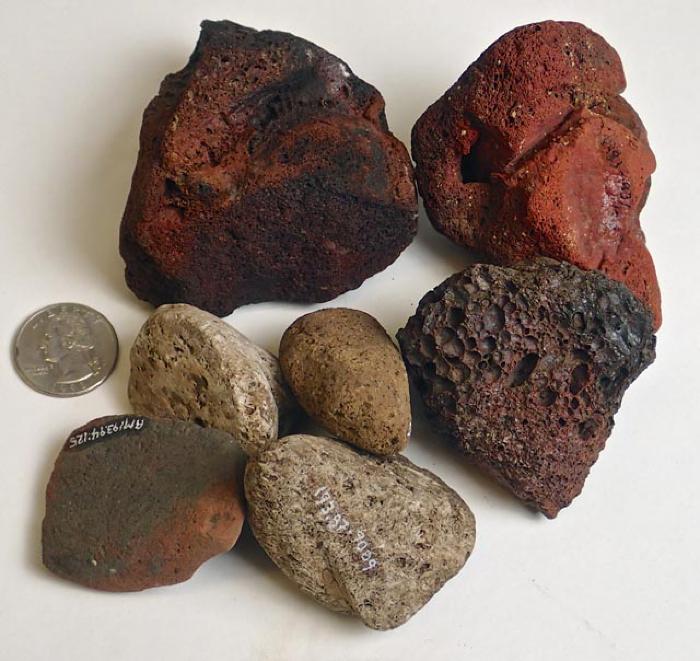Pumice — Mangil'un, Qapuk

Pumice is a type of volcanic glass. This gritty, light-colored igneous rock forms during volcanic eruptions, as water mixes with molten lava. The water turns to steam and creates a lightweight, frothy stone that hardens as it falls to earth. Most pieces of pumice are so light they will float in water.
Alutiiq craftsmen once used pumice like sandpaper, to smooth the surfaces of tools during manufacture. Kodiak’s archaeological sites commonly contain pieces of pumice with facets, ground surfaces created by rubbing the stone against a bone or wood object. In more recent times, people used pumice to clean their stovetops and anything else they wanted to smooth or shine.
Although Kodiak Island has no volcanos, pumice can often be found along the archipelago’s shores, delivered to the area by wind and tides from the volcanically active Alaska Peninsula. Much of the pumice found on Kodiak in the past century comes from the 1912 eruption of Mt. Novarupta on the Alaska Peninsula. The explosion, the largest in the 20th century, sent more than 30 cubic kilometers of volcanic debris into the air. Although prevailing winds carried much of the massive debris cloud toward the northern end of the Kodiak Archipelago, lightweight pumice clogged the ocean and floated around the islands.
In the days following the eruption, people in boats reported that the pumice was a foot deep and that in Shelikof Strait, the pumice field was dense enough for a person to walk on! As the tides carried pumice to shore, and as pumice eroded from the Alaska Peninsula landscape, Kodiak beaches were inundated with the material. People found garbage can-sized pieces and collected pumice along the shores for decades.
